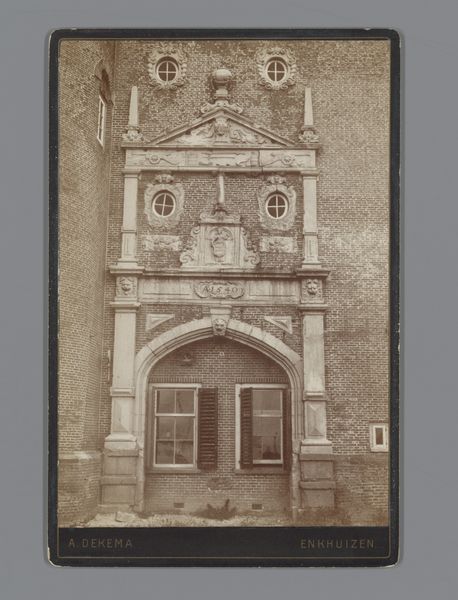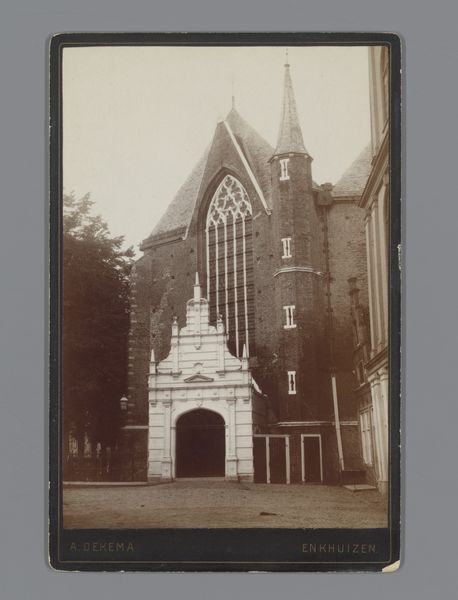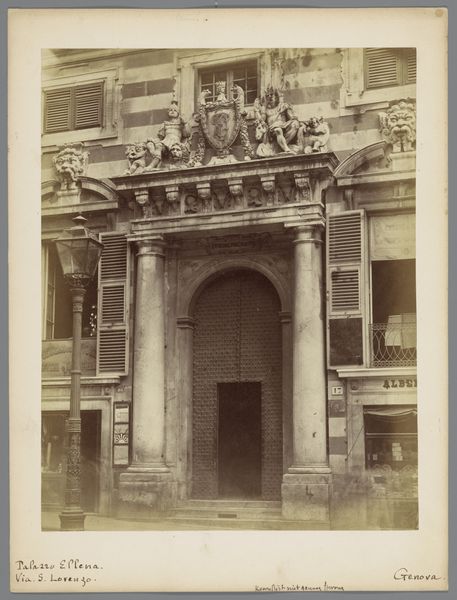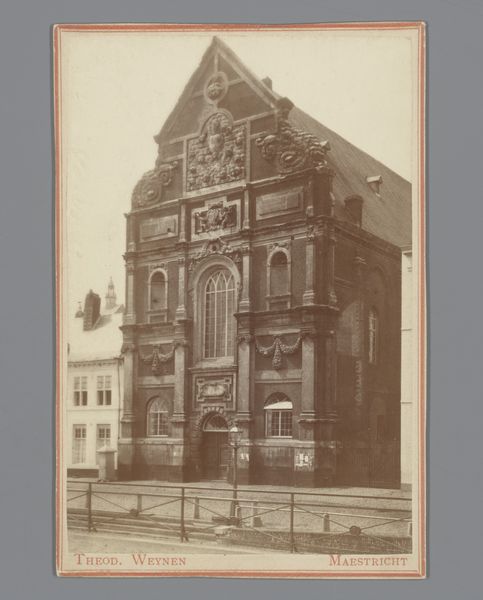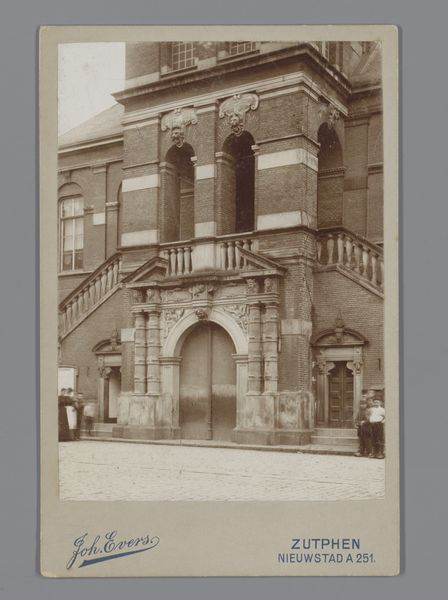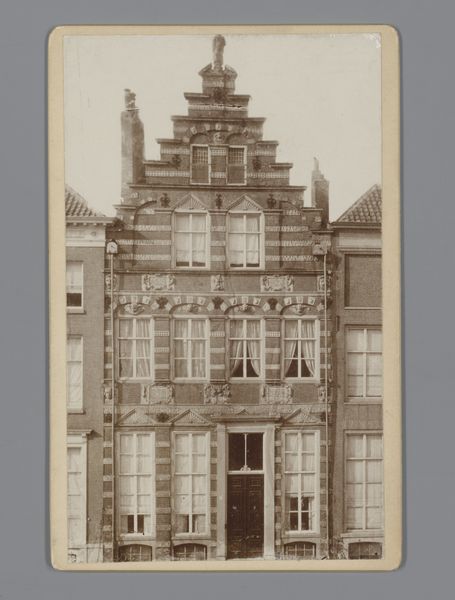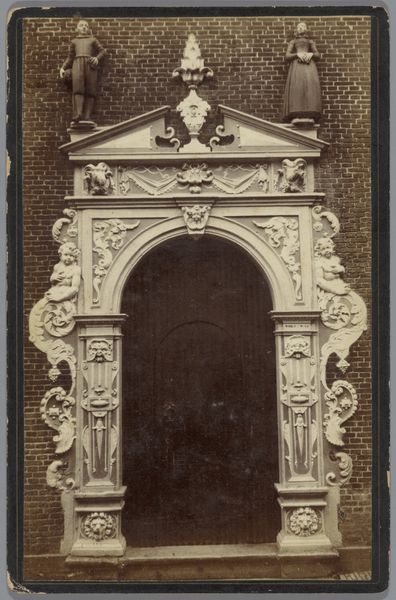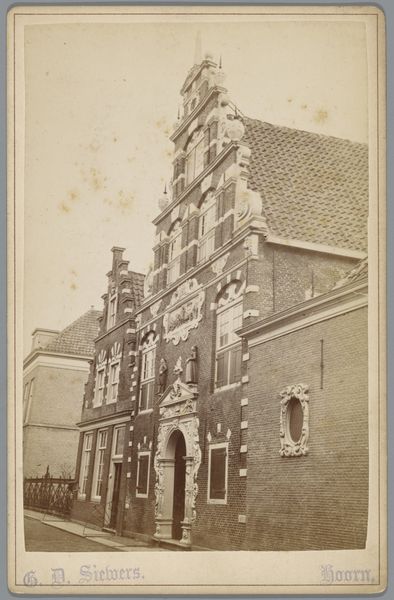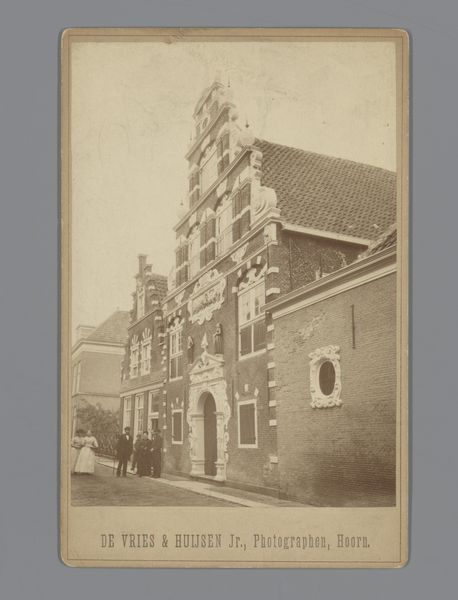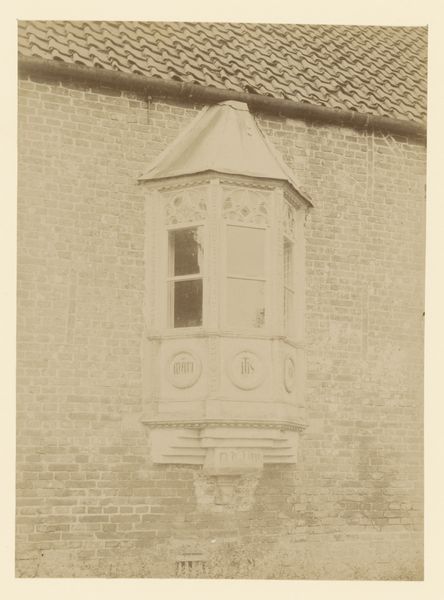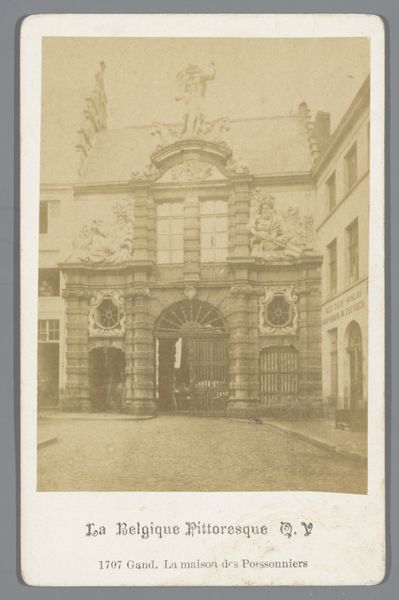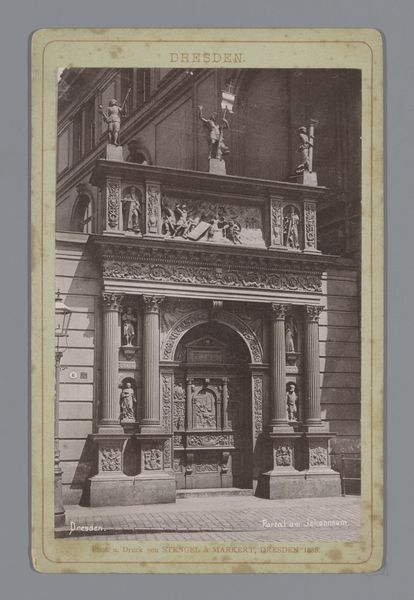
Poort van het Zuiderzeemuseum te Enkhuizen, voormalige poort van de pakhuizen van de Oost-Indische Compagnie 1865 - 1896
0:00
0:00
photography, gelatin-silver-print, architecture
#
dutch-golden-age
#
photography
#
photojournalism
#
gelatin-silver-print
#
cityscape
#
architecture
Dimensions: height 152 mm, width 100 mm, height 167 mm, width 109 mm
Copyright: Rijks Museum: Open Domain
Editor: This is a gelatin silver print from sometime between 1865 and 1896 by Albert Dekema, showing the gate of the Zuiderzee Museum in Enkhuizen. It was originally the gate of the East India Company warehouses. It feels quite somber to me; a moment captured of a powerful trading history. What do you see in it? Curator: I see a powerful commentary on Dutch identity and its complex relationship with colonialism. Consider that this "cityscape," seemingly benign, actually represents the infrastructure that facilitated immense wealth extraction and exploitation. The East India Company, though celebrated in Dutch history, represents a dark chapter of oppression and global inequality. Editor: I hadn't thought about it that way, focusing more on the architecture itself. Does the artistic style tie into this commentary at all? Curator: Absolutely. The visual language—the detailed documentation typical of Dutch Golden Age sensibilities—can be interpreted as an attempt to legitimize or even glorify a history built on systemic injustice. We need to be critical of whose stories are told and how they are told through art and architecture. Why focus on the beauty of the gate instead of the stories of the people who suffered because of what went through it? Editor: So you're suggesting that by simply documenting it without critical commentary, the photographer might be complicit in perpetuating a biased narrative? Curator: Precisely. The absence of certain voices or perspectives becomes a powerful statement in itself. The photograph is not simply a depiction, but also a declaration, a choice to remember in a certain way, perhaps omitting crucial aspects of historical and social realities. Editor: I’ll never look at cityscapes the same way again. It makes you consider whose story is being told, or not told. Curator: Exactly. That's the critical lens we need to apply when engaging with art.
Comments
No comments
Be the first to comment and join the conversation on the ultimate creative platform.
